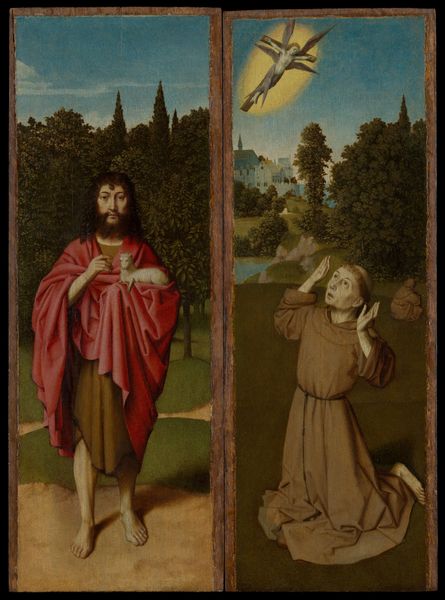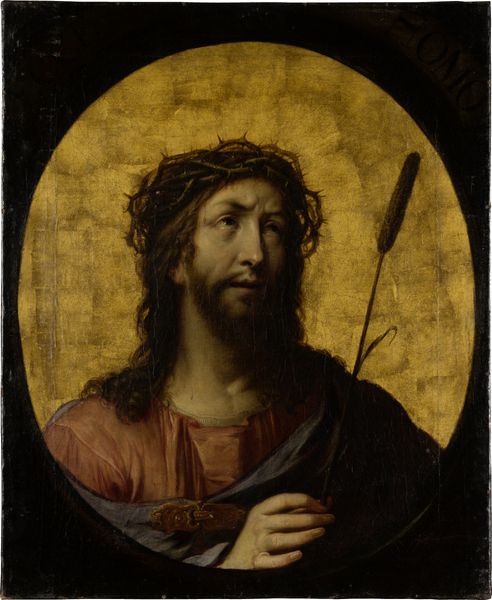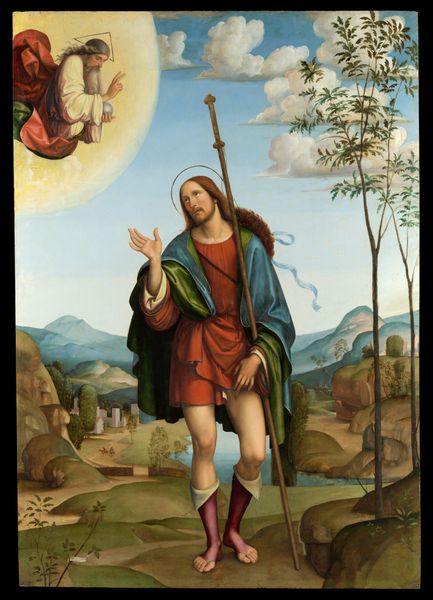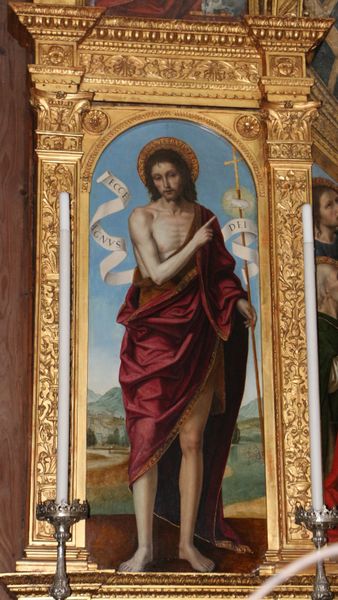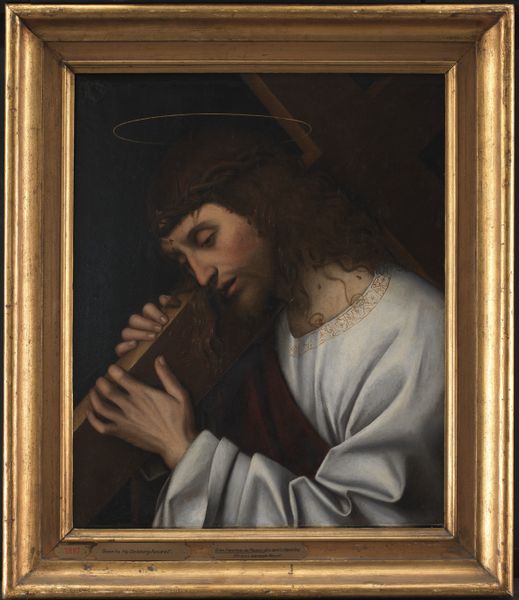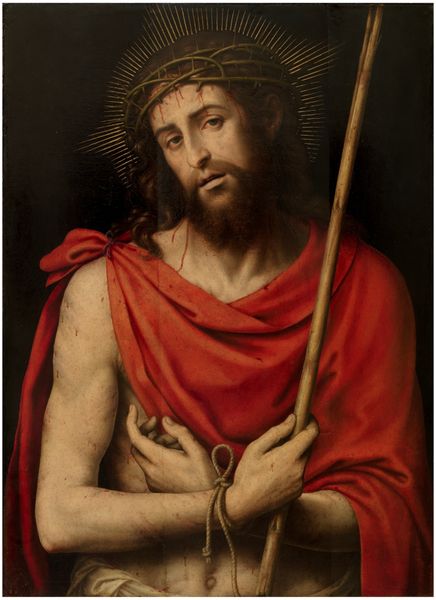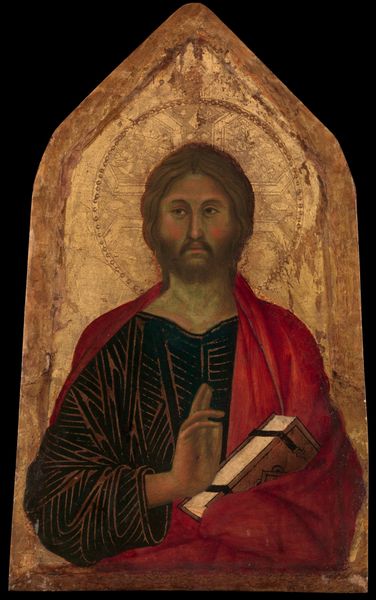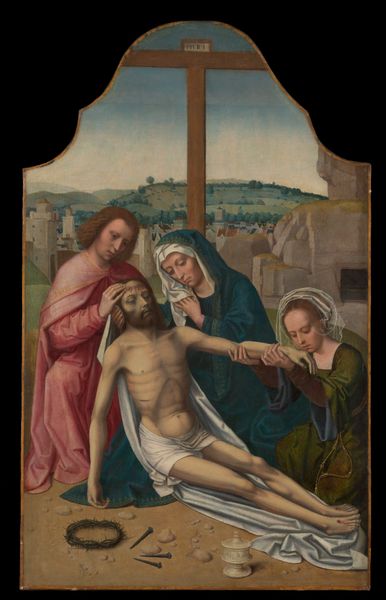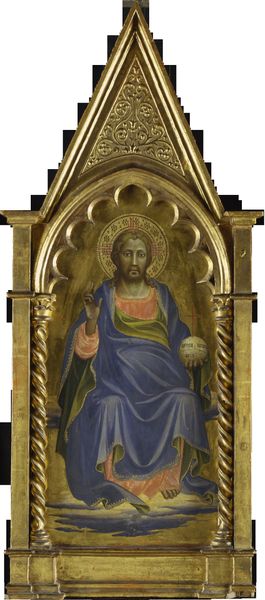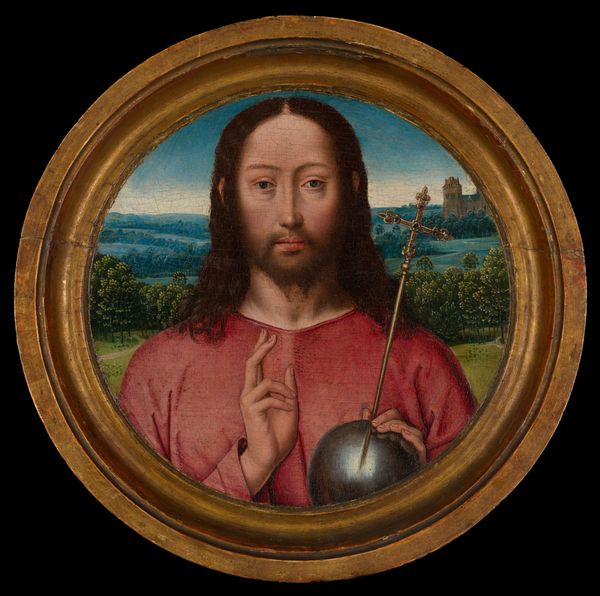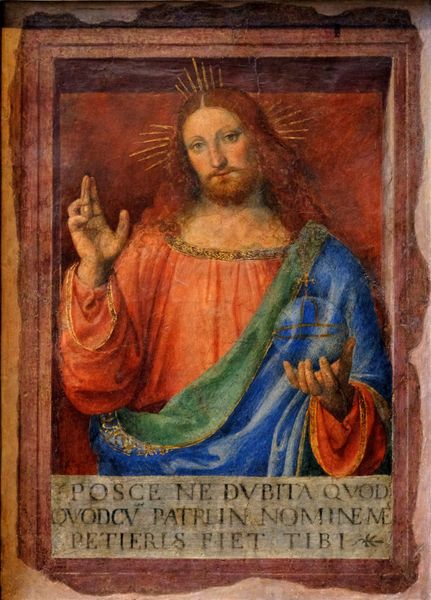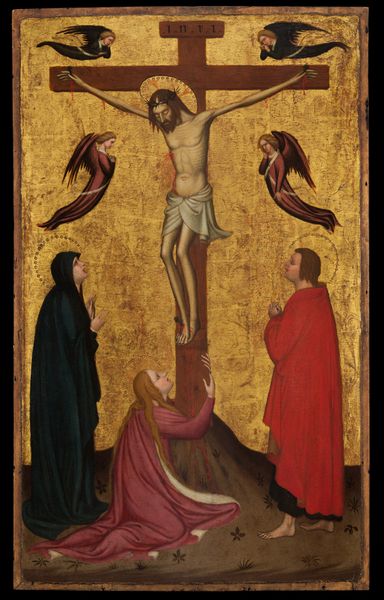
painting, oil-paint
#
portrait
#
painting
#
oil-paint
#
figuration
#
11_renaissance
#
chiaroscuro
#
italian-renaissance
#
portrait art
#
christ
Dimensions: 80 1/4 x 51 1/2 in. (203.8 x 130.8 cm)
Copyright: Public Domain
Art Historian: Editor: Editor: So, here we have Andrea Solario’s “Christ Blessing,” painted sometime between 1495 and 1524. It's an oil painting currently housed here at the Metropolitan Museum of Art. I am struck by the way the figure dominates the space, it makes it very intimate. What do you see in this piece, from your perspective? Art Historian: For me, the fascinating aspect lies in understanding how the materials—oil paint, wood panel, and the pigments themselves—were sourced, processed, and handled by Solario and his workshop. Let's think about the labor involved in creating the artwork itself; grinding pigments, preparing the panel. How did that process influence the final outcome? Editor: That’s interesting; I was only thinking about the…meaning, and not the physical process of creation. Art Historian: Exactly. Consider the social context. Who commissioned this work, and what was their intent? How would the choice of materials reflect that? For instance, the vibrancy of those reds - that depended on access to specific materials like Vermillion or Carmine, very expensive pigments. It indicates a patron with considerable means. It elevates it. Editor: So, the artwork becomes more about economics and access than necessarily a…devotional object? Art Historian: Not necessarily more, but certainly intertwined. The spiritual message would be reinforced by its material worth, perceived skill, and the labour that goes into it. What kind of statement is made using valuable materials versus common ones? What did you notice about the way it was painted, and where the light sources are? Does that light speak of any message or symbolic directive that has ties to real time labor practices? Editor: Hmm… I suppose it says something about how those with access to wealth interpret religion... and how they want it presented? That it is, itself, valuable and divine, the light…is this kind of propaganda? Art Historian: Well, "propaganda" is a loaded word. But think about the message being crafted here. Highlighting the inherent social structures. Even artistic skills such as mastering the oil technique demonstrate considerable resources available to Solario. This brings art closer to cultural economics and political messaging in practice, versus simply devotional output. Thank you, what an enlightening consideration!
Comments
No comments
Be the first to comment and join the conversation on the ultimate creative platform.
